Archaeological site of Phylakopi in Milos

We created our blog with the purpose to present you all the things to do in Milos island, Greece! Find at this page all you need to know about the archaeological site of Phylakopi in Milos!
The archaeological site of Phylakopi in Milos, the ancient city of Phylakopi, Intro
The prehistoric archaeological site of Phylakopi in Milos, a site located on the island of Milos in the Cyclades at the aegean sea boasts a wealth of ancient history. Milos is an island renowned for its scenery and picturesque beaches attracting many visitors keen to explore the regions rich cultural heritage.
The prehistoric archaeological site of Fylakopi is a settlement that thrived during the early Cycladic period in the Late Bronze Age flourished from around 3000 BC to 1st century bc.
To reach Mylos from Athens tourists have the option to take a ferry from Piraeus port and arrive at the main port of the island in adamas or choose a flight. On the island exploring Phylakopis site presents a unique opportunity to delve into the areas history and gain insights, into how its ancient inhabitants lived. Mylos, and island of volcanic origin has a very distinctive geology. Rock crystals are the product of gradual cooling of molten rocks, therefore obsidian is an amorphous volcanic glass.
This site provides a glimpse into the civilization of the Cycladic islands and showcases remarkable advancements made by its people during the Late Bronze Age. With its captivating history and stunning surroundings Phylakopis archeological site is a must visit for those intrigued by civilizations.
The archaeological site of Phylakopi in Milos, Milos Island
Mylos Island holds a wealth of treasures that provide a glimpse into the captivating history of the Cycladic culture. Among the different parts of the island one stands out; the ancient city of Klima. Klima was a commercial and cultural center. This historic settlement dates back, to the millennium BC and continues to captivate visitors with its well preserved ruins. Another intriguing archaeological site is Phylakopi, which thrived during the Bronze Age until its demise around 1100 BC. In the history there was the destruction of phylakopi due to an earthquake and it was rebuild again making the start of the third era. Exploring these remains offers insights, into the daily lives and customs of the Cycladic people.
Furthermore don’t miss out on visiting Plaka Castle—a must see for history enthusiasts—overlooking the village of Plaka and affording breathtaking views of the surroundings.
All Milos Islands archaeological sites are an essential part of its identity inviting visitors to immerse themselves in the captivating history of the Cyclades.
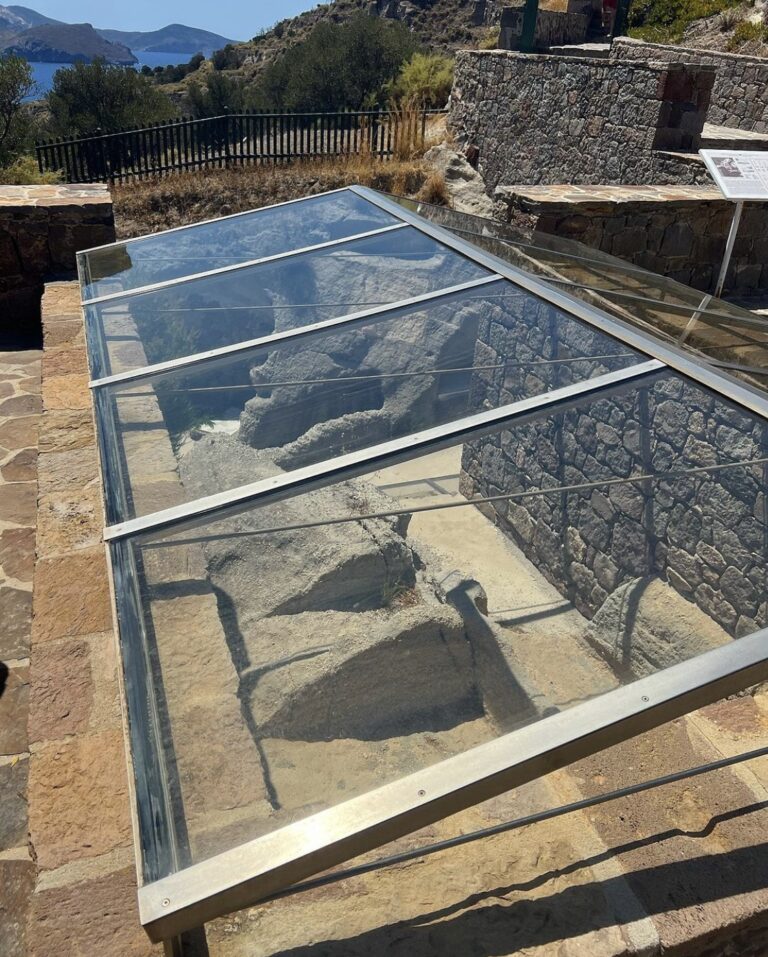
The prehistoric archaeological site of Phylakopi | The major settlement of the bronze age
Archaeological site of Phylakopi in Milos – In the Prehistoric Aegean it holds great significance as a well preserved Cycladic settlement of phylakopi. Throughout the bronze age in Greece, Fylakopi played a role by serving as a trading port and exerting political control of the Minoans. Initially established as a settlement Phylakopi swiftly grew in size and importance eventually becoming one of the principal centers in the Aegean during the Late Bronze Age. The archeological discoveries at Fylakopi offer insights into the interactions and influences between Mycenaean and Minoan cultures within this region. Exploring the preserved ruins of this city allows visitors to gain deeper knowledge about its once thriving civilization. Additionally those who visit can also visit pollonia as well, a neighboring village adorned with beaches and traditional Greek architecture. The prehistoric aegean site of Phylakopi continues to serve as a resource for unraveling the complexities of Bronze Age civilization, in the region and shedding light on the end of the Late Bronze Age.
The prehistoric archaeological site of Phylakopi | Excavations
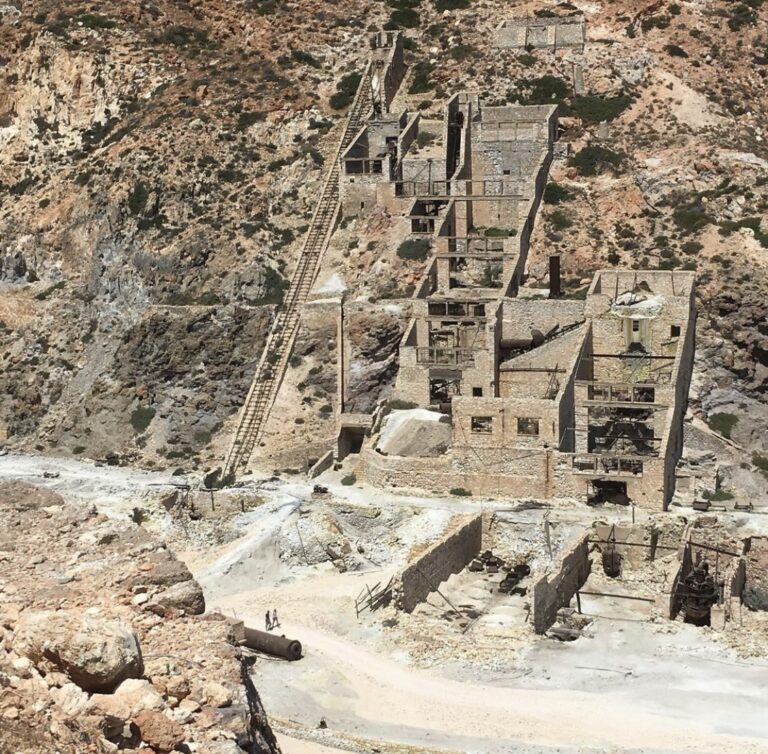
The excavation of the archaeological site of Phylakopi in Milos were carried out at the British school of Athens. The ancient city of Phylakopi has been the subject of significant archaeological research. The cite is one of the most important settlements of the cycladic civilization. Phylakopi was under the political and economical influence of other parts of the country. More specifically filakopi was under Minoan influence of Crete and under mycenaean influence of the mainland of Greece. The excavations at Phylakopi have unveiled insights into its urban planning showcasing features like multi story buildings well paved streets and an intricate water supply system. Among the findings is a figurine called the ” Lady of Phylakopi ” which serves as a well preserved representation of Cycladic art.
Thanks to the work of the archaeologists, the fact that they imposed the excavate of the area and found the arhaeological site has provided us with knowledge about the history and culture of the Cycladic civilization. They have also shed light on how this city served as a trading hub while establishing connections with Mediterranean civilizations. Ongoing excavations at Phylakopi continue to unearth information, about this ancient city that left an indelible mark on history. The findings from Phylakopi, including pottery, tools, and artifacts, are now kept at the archaeological museum of Athens.
The archaeological site of Phylakopi | The three phases of the ancient Phylakopi
The development of the archaeological site of Phylakopi in Milos took place in dofferent chronological periods and was divided into three phases that corresponded to different periods during the Bronze Age. The first phase, which occurred between 3000 and 2000 BC involved the construction of stone houses and a reliance, on agriculture and fishing. In the second phase lasted from 2000-1550 BC there was progress in pottery and metalworking techniques along with increased trade with neighboring Aegean civilizations. The third and final phase took place from 1550-1100 BC. Witnessed the construction of stone buildings as well as an expansion in trade networks.
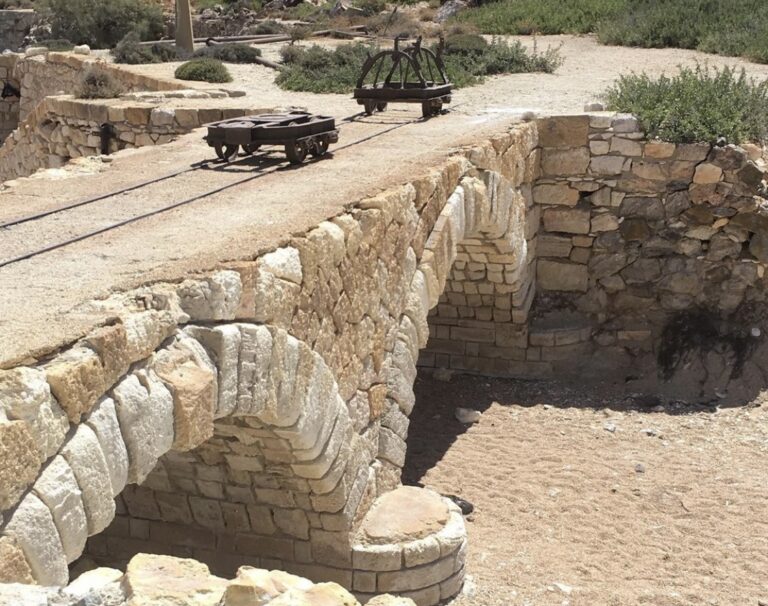
During this phase Phylakopi emerged as a thriving center with a well planned layout and a defensive fortification wall. Archaeological excavations have provided insights, into the civilization that once thrived there.
The archaeological museum of Milos
The Milos archaeological museum is a must see for anyone intrigued by the islands early Bronze Age past. Situated in the town of Plaka this museum showcases a collection of items dating back, to 3000 BC. These artifacts include pottery, tools and figurines that offer insights into the civilization that once thrived on this island. Among the museums possessions is the Venus de Milo statue featuring the goddess Aphrodite, which was uncovered here in 1820 and currently resides at the Louvre Museum in Paris. However don’t overlook the plethora of captivating sculptures and artifacts within this museum that provide a glimpse into Milos abundant archaeological heritage. In addition to exploring these treasures visitors can also delve into the islands history and its ties to the iconic statues discovered within its soil. All a visit to Milos archeological museum promises an immersive journey, through ancient history—a true gem waiting to be discovered.
Parafragas Caves
The Parafragas Caves located right next to the archaeological site of Phylakopi are truly a sight to behold. Their distinctive rock formations and pristine waters make them a captivating natural wonder. Exploring these caves allows visitors to truly appreciate the islands marvels. The caves are a loved destination, for swimming and snorkeling thanks, to their tranquil and alluring waters. Additionally one can relish in the awe inspiring vistas of the cliffs and rock formations that surround the caves.
See also as you will visit Milos
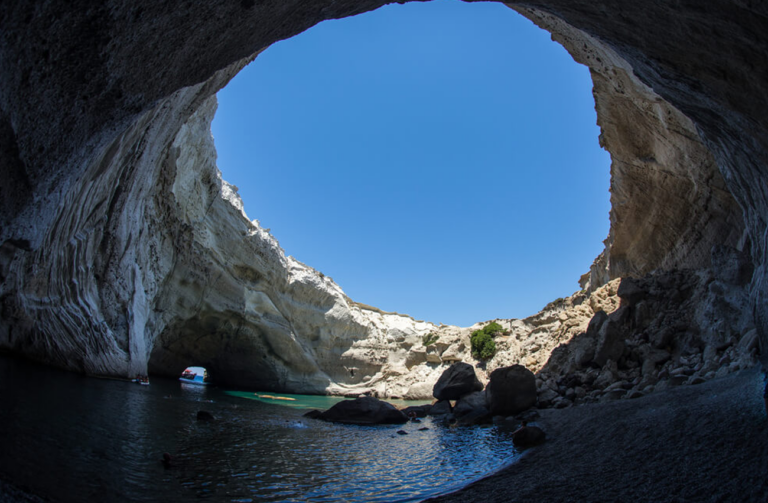
As you will be on the island for vacation it really deserves your time to visit the archeological site in Milos island. The site includes the early Christian catacombs, which are some of the most important in Greece, as well as the ancient theatre of Milos, which offers stunning views of the island. Additionally, the Venetian castle of Milos in Plaka is a must-see, with its rich history and breathtaking architecture. These sites offer a unique glimpse into the island’s past and are well worth the visit.
The Location, Archaeological site of Phylakopi in Milos
Things to do in Milos, boat tour Milos Island
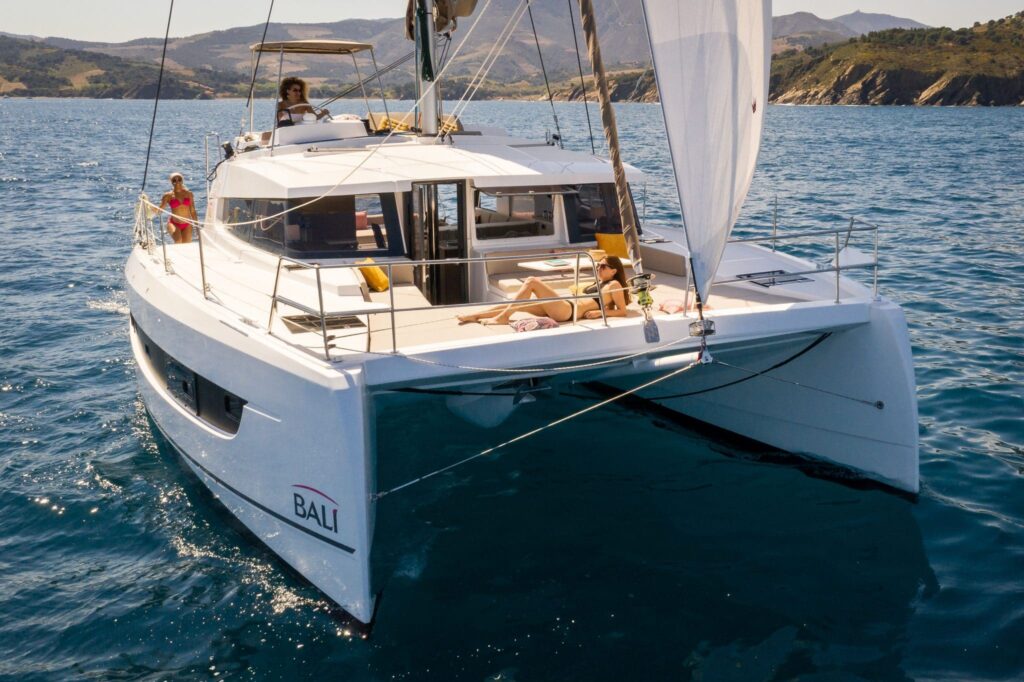
A very nice option while being on the island is to take a boat tour around the island. There are a lot of different companies that offer different trips around the coastline of the island and stop at the amazing beaches. Some of them offer full day trips, some others half day and some others private trips. In general you will find the option that suits better your schedule. In order to take a right decision on which company to choose see reviews and photos from the online sources. All of them till today start from Adamantas, located in the center of the island. You can walk along the port and find all the available options.
For the best boat tour in Milos, we will be more than happy to sail with you!! Find our Milos cruises here.


